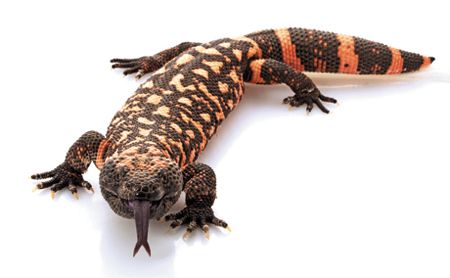GLP-1 analogs: An emerging veterinary treatment for diabetes?
Ohio State researcher optimistic that monthly injections could replace daily insulin in cats.

GLP-1 analogs were first discovered by scientists in the saliva of the gila monster. "Which shows that we should always support pure science," says Dr. Chen Gilor, who is studying these drugs as a diabetes therapy in cats. Photo by Shutterstock.com.Chen Gilor, DVM, PhD, DACVIM, is excited about an emerging diagetes therapy in human medicine that may soon revolutionize the treatment of diabetic pets as well.

Dr. Chen Gilor Gilor, who is an assistant professor at Ohio State University College of Veterinary Medicine, spoke at a recent CVC about glucagon-like peptide (GLP)-1, a hormone secreted from the gastrointestinal tract after eating that stimulates insulin secretion during hyperglycemia. Analogs of this hormone-which scientists discovered in gila monster saliva-are being used to treat type 2 diabetes in people fairly early in the disease, Gilor says.
“GLP-1 analogs are perfect in that they don't just stimulate insulin secretion-they're safe to use even in euglycemic animals because their effect is only meaningful in hyperglycemia,” Gilor says. “GLP-1 analogs can be as effective as insulin in treating type 2 diabetes in people.”
Gilor and his colleagues at Ohio State have been studying the effects of these drugs in cats. While people who are treated with GLP-1 analogs receive weekly injections rather than daily or even twice-daily injections with insulin, the frequency of administration could be even more dramatic in pets.
“We are hoping to show in the near future that even once-a-month injections of these GLP-1 analogs will be useful for the treatment of diabetes in cats,” Gilor says.